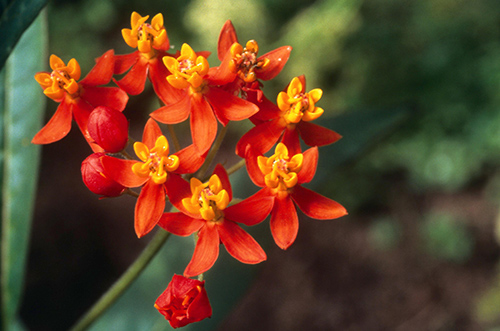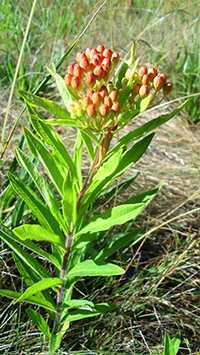Contents
The pleurisy root produces a white sap and has been widely employed in North America to treat respiratory afflictions. The natives, who have used the plant for ages, named it.
- 100% NATURAL PRODUCT: No artificial colors or flavors
- MADE AND TESTED IN THE USA: We made our products in Colorado, famous for its pure nature

Healing Properties and Warning
This plant’s most essential active component is asclepiadine, a glycoside similar to the foxglove plant. It also contains essential oil, resin, starch, mucilage, and tannin.
The root of the plant has a strong expectorant and sudorific effect. When combined with other treatments, the plant renders good results for bronchial catarrh, acute and chronic bronchitis, and pneumonia.
WARNING! When consumed fresh, the leaves and the stem may cause poisoning since they contain a toxic glycoside that disappears with drying. The leaves and stems of the plant have been known to poison animals that eat them. The fresh root can also be toxic.
In the 19th century, pleurisy root was widely used as an expectorant. It is an ideal remedy for pneumonia and pleurisy. For severe cases, mix equal parts of the plant with an infusion of skullcap and take in small amounts (two ounces) every half hour while warmly tucked in bed. It makes for an excellent sweating agent that aids in breaking up bronchial problems, pleurisy, colds, and cases of flu. Additionally, it can be combined with cayenne at the onset of a cold.
Native Americans chewed dried roots or made tea to treat dysentery and chest problems. Pleurisy encourages the flow of normal lung fluids, stimulates the lymphatic system, and reduces inflammation of the pleural membranes of the lungs. It is also helpful for treating bowel and stomach disorders in children.
Use one tablespoon to a quart of boiling water, let steep for thirty minutes, and use warm as an enema to treat bowel problems.
Pleurisy Root Varieties

The genus Asclepias includes several American species besides the Asclepias tuberosa L. Among the most outstanding in phytotherapy are the following:
- Asclepias curassavica L.
- Asclepias incarnata L., whose bark provides textile fiber. The root and rhizome of both this and the latter varieties have properties and medicinal uses similar to those of Asclepias tuberosa L.
- Asclepias speciosa Torr. And Asclepias syriaca (milkweed), which are grown for eating as vegetables and to make chewing gum from their latex.
Pleurisy Root Scientific Facts

- Other names: butterfly weed, Canada root, flux root, tuber root, white root, wind root, and orange swallowwort.
- Spanish: Asclepias.
- Environment: This plant is native to North America and grows in sandy, dry soils. Some varieties are grown in Europe as ornamental herbs.
- Description: Plant of the Asclepidiaceae family, whose stem grows up to one meter high. Its leaves grow in a spiral pattern around the stem, and its flowers are orange or yellow, gathering in umbels on the top of the stem.
- Parts of the plant used medicinally: Dried root.
How to use Pleurisy Root
Infusion: Steep for thirty minutes and take one to two cups daily; children should take one to five drops in hot water every one to two hours. Decoction: Simmer for five to fifteen minutes and take two to three ounces as needed. Tincture: Take thirty to sixty drops every three hours. Fluid Extract: Take ½ to one teaspoon three to four times daily. Powder: Take three to five #0 capsules (20 to 30 grains) three to four times daily.
DISCLAIMER: All content on this website is presented solely for educational and informational objectives. Do not rely on the information provided as a replacement for advice, diagnosis, or treatment from a qualified medical expert. If you are pregnant, nursing, or have any preexisting medical concerns, talk to your doctor before using any herbal or natural medicines.
REFERENCES
- George D. Pamplona-Roger, M.D. “Encyclopedia of Medicinal Plants.” George D. Pamplona-Roger, M.D. Encyclopedia of Medicinal Plants. Ed. Francesc X. Gelabert. Vols. 1 San Fernando de Henares: Editorial Safeliz, 2000. 298. Print.
- Vance Ferrell Harold M. Cherne, M.D. The Natural Remedies Encyclopedia [Book]. – Altamont, TN: Harvestime Books, 2010. – Vol. Seventh Edition: 7: pp. 175.
- WebMD: Pleurisy Root: https://www.webmd.com/vitamins/ai/ingredientmono-469/pleurisy-root
- FDA: Dietary Supplements https://www.fda.gov/food/dietary-supplements
Last update on 2025-06-04 / Affiliate links / Images from Amazon Product Advertising API





